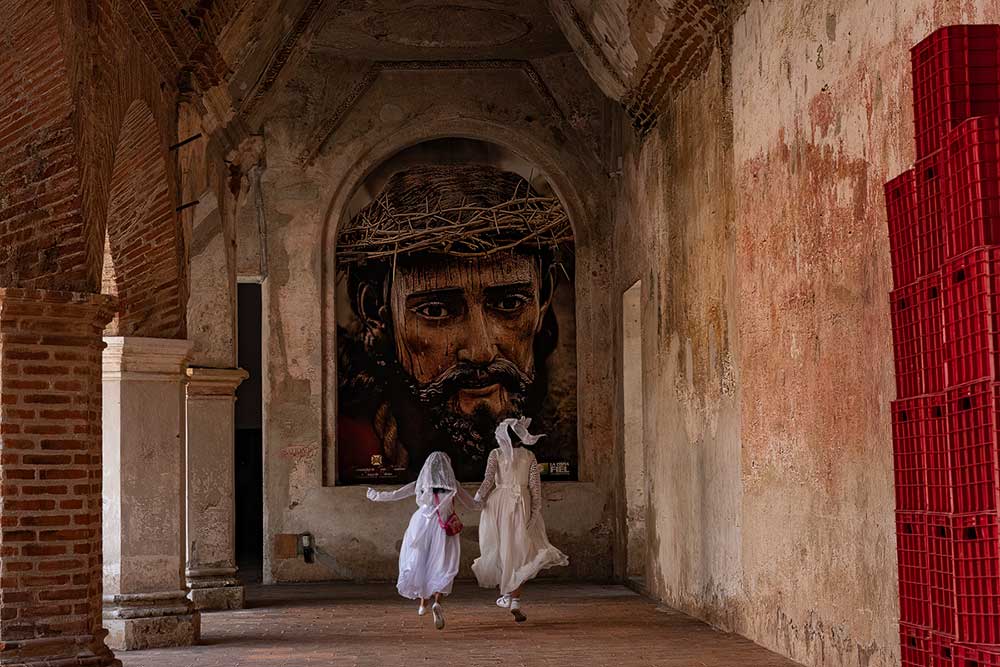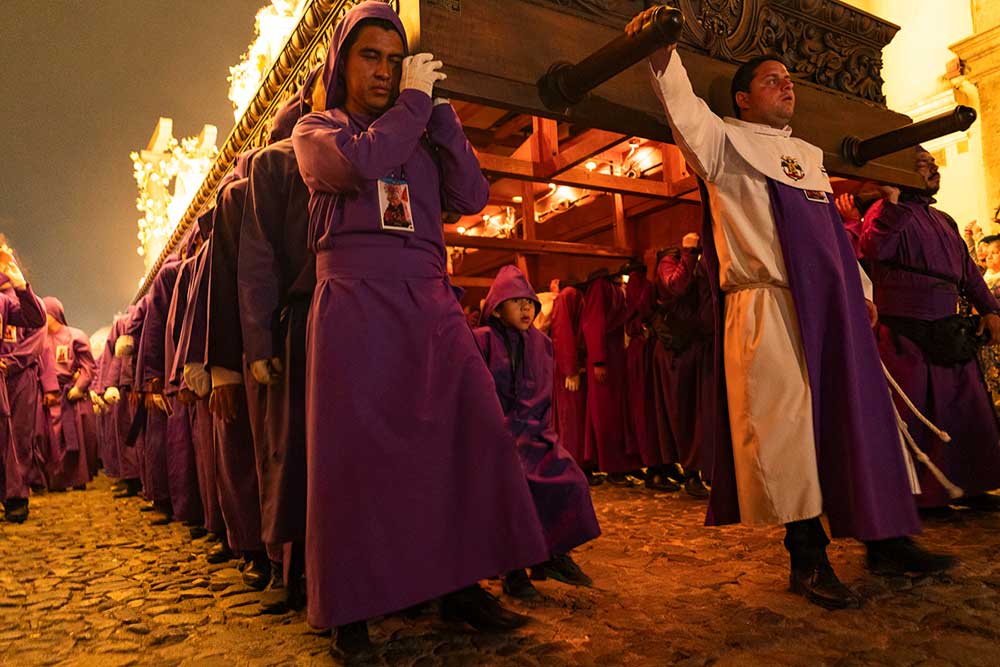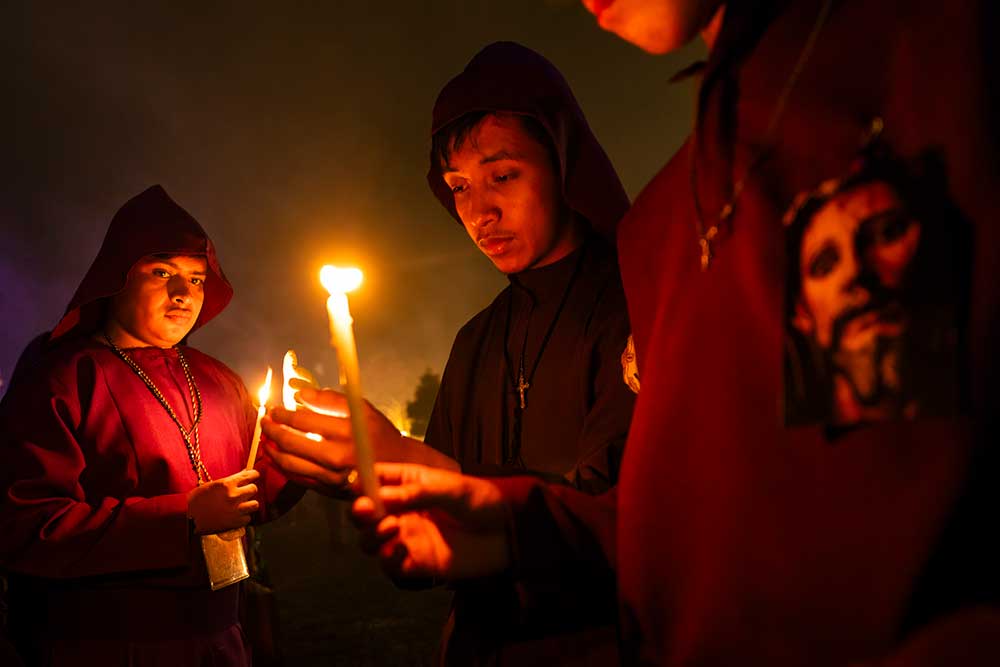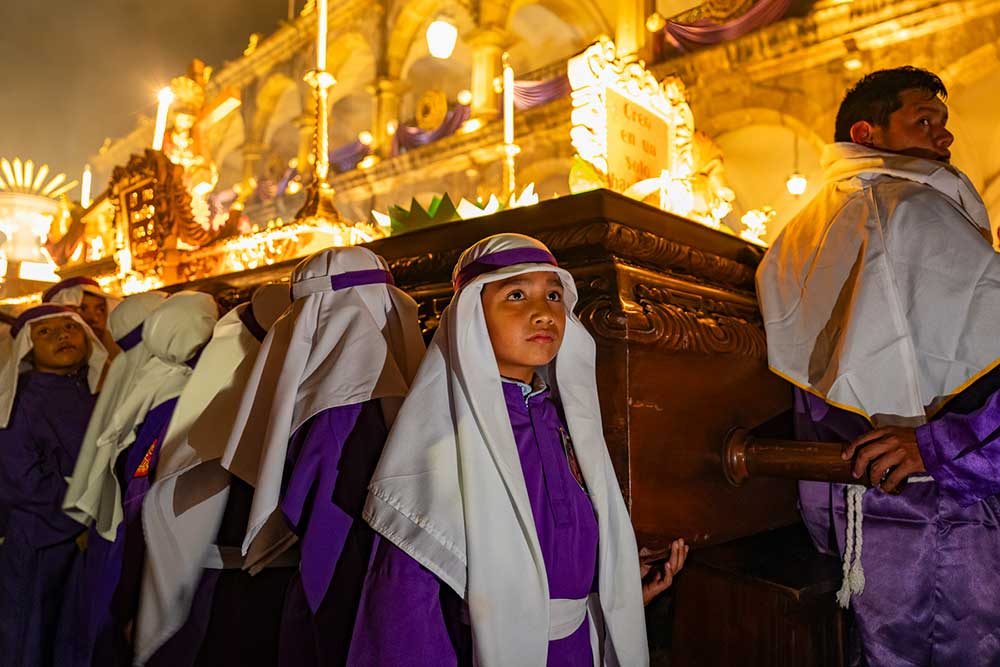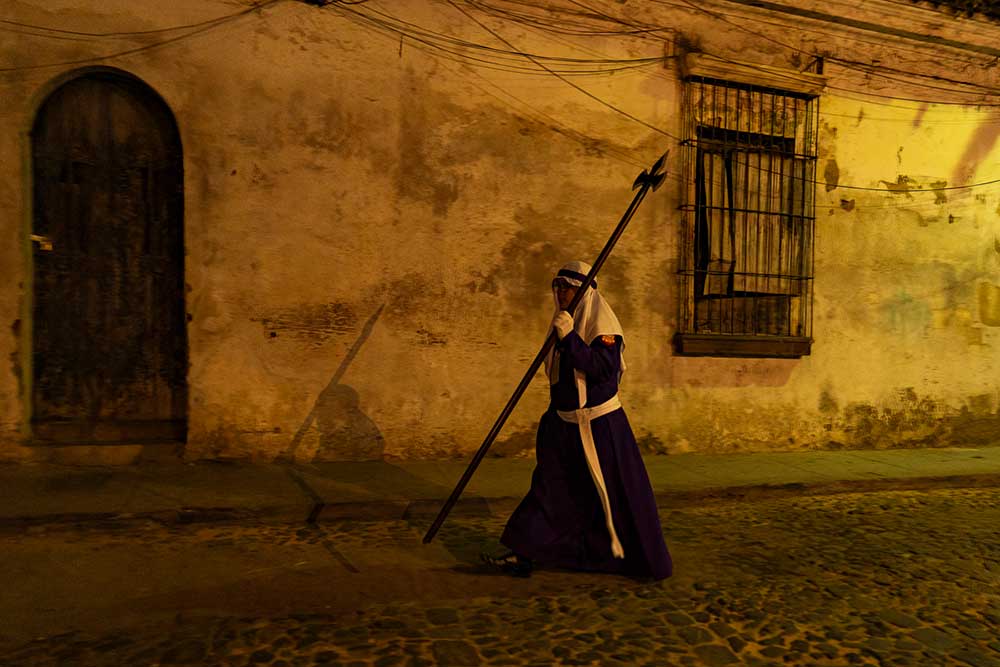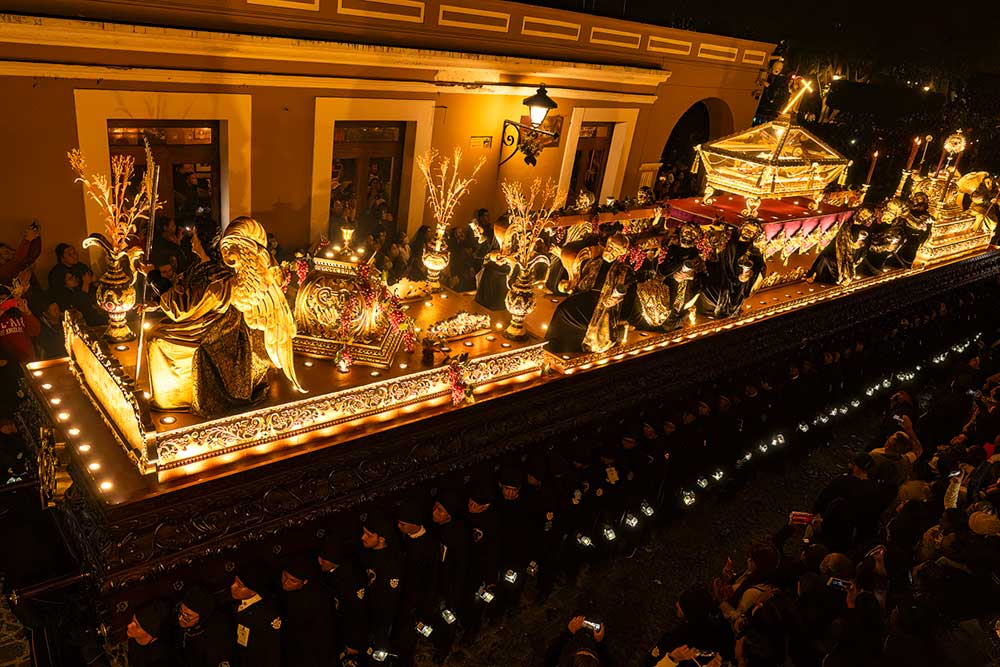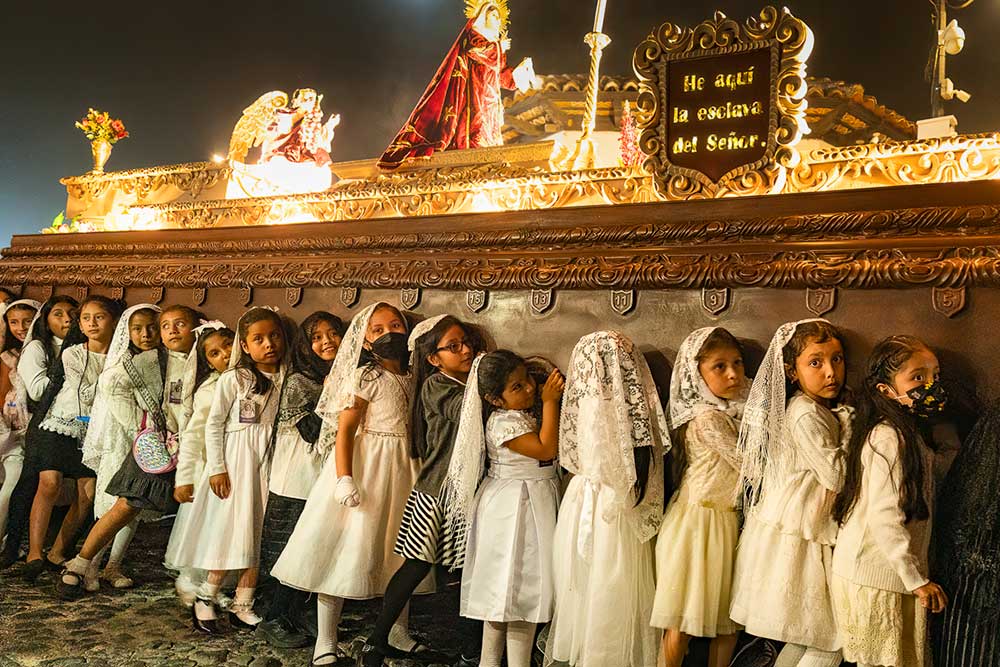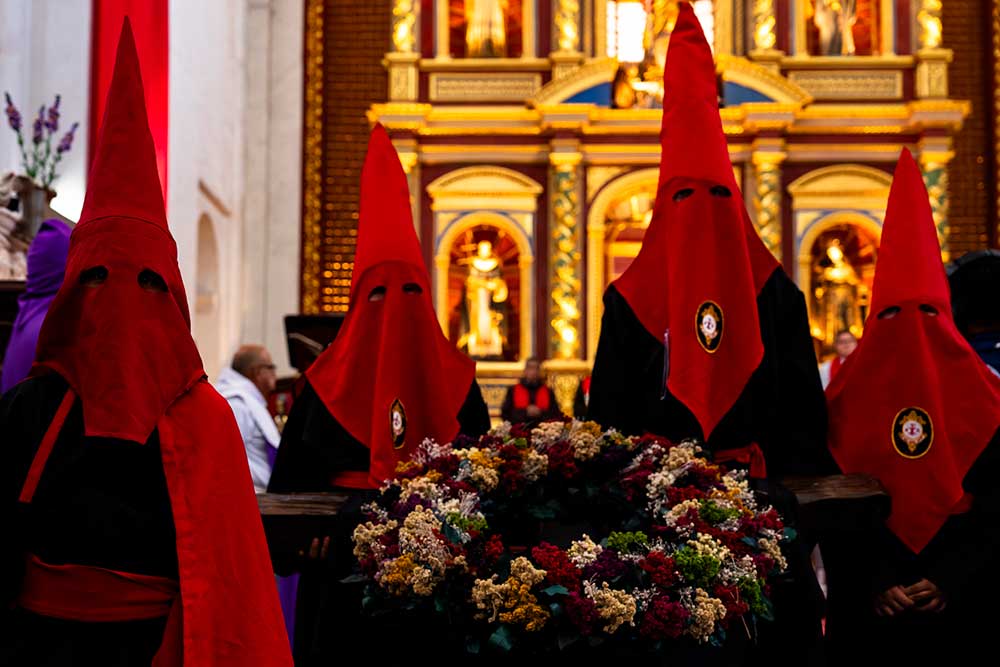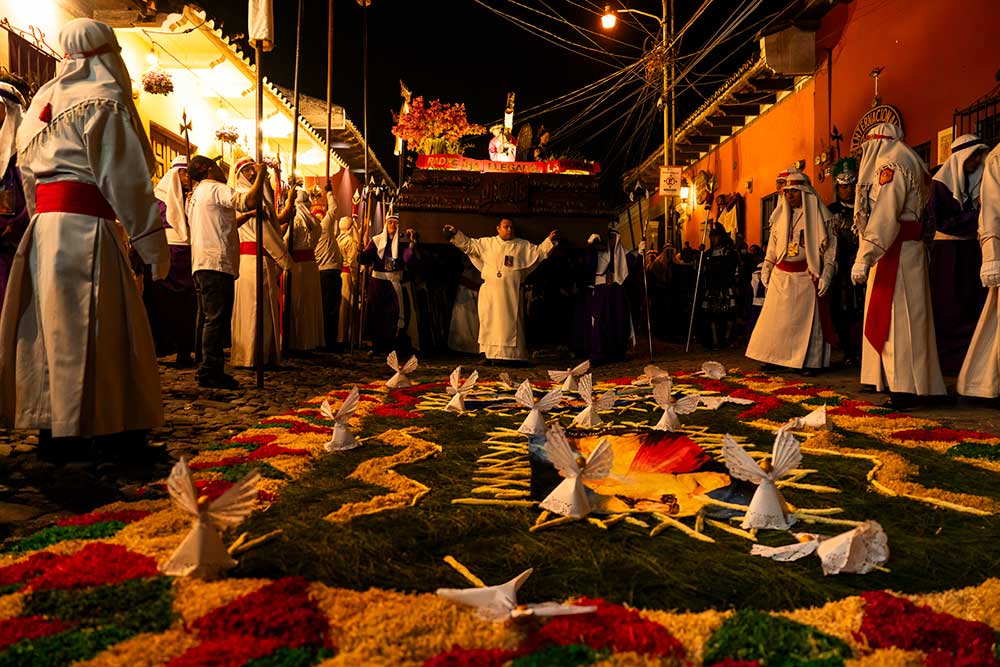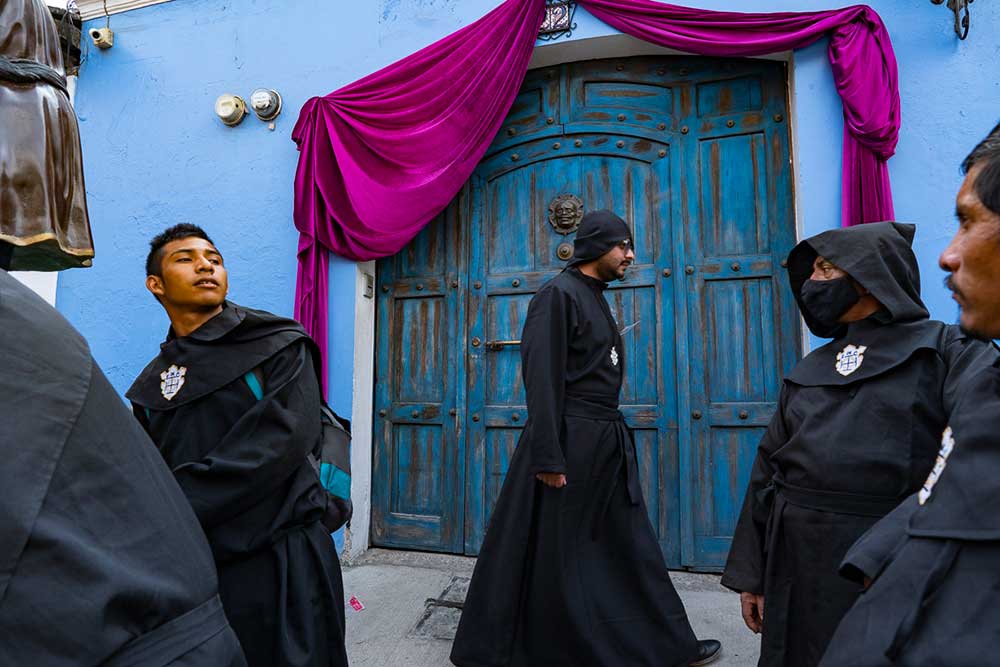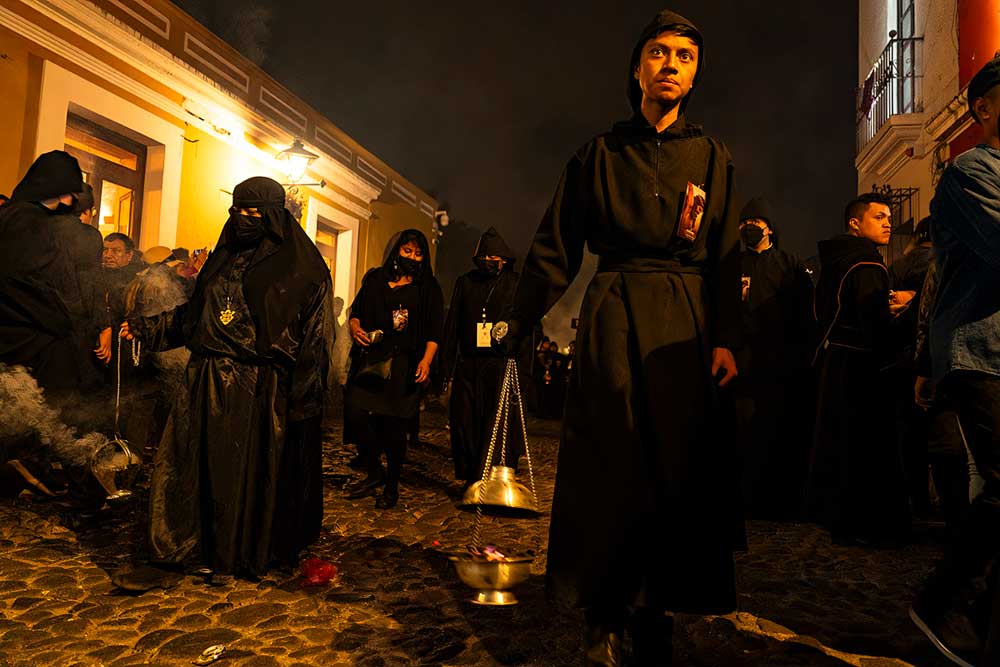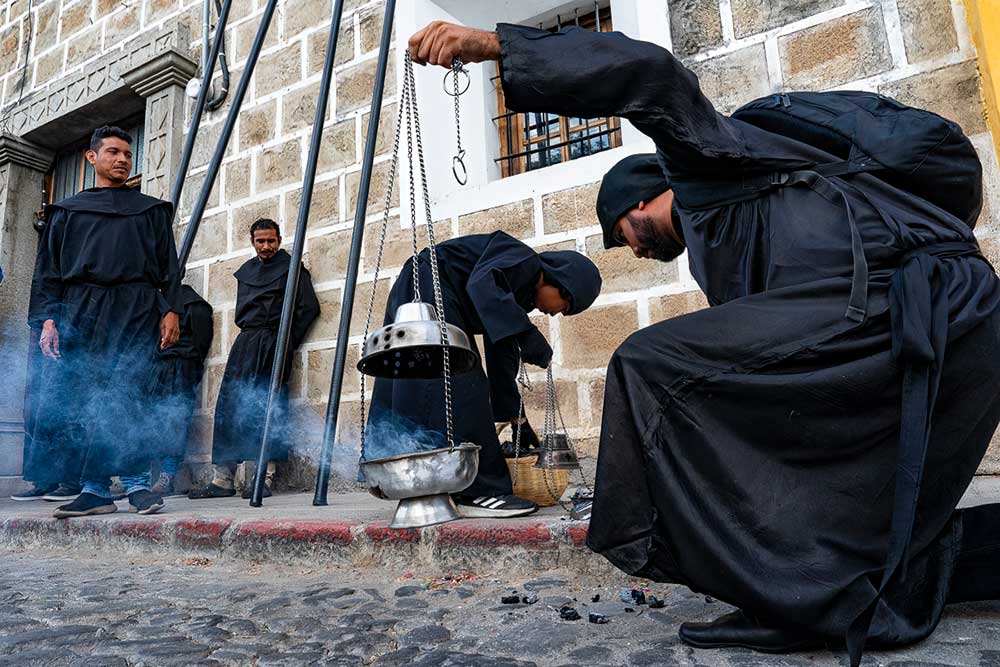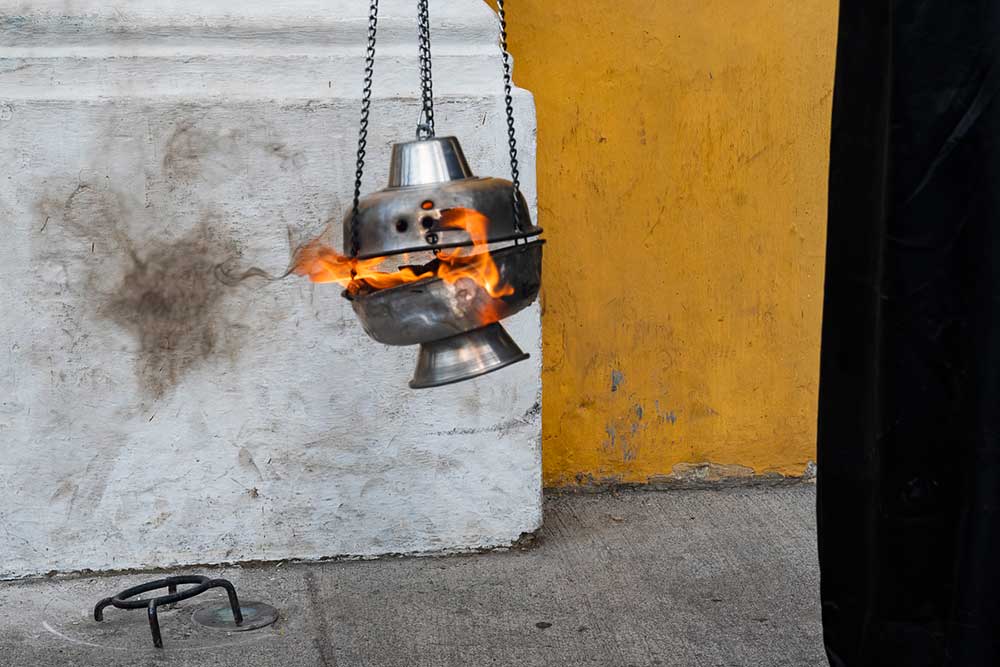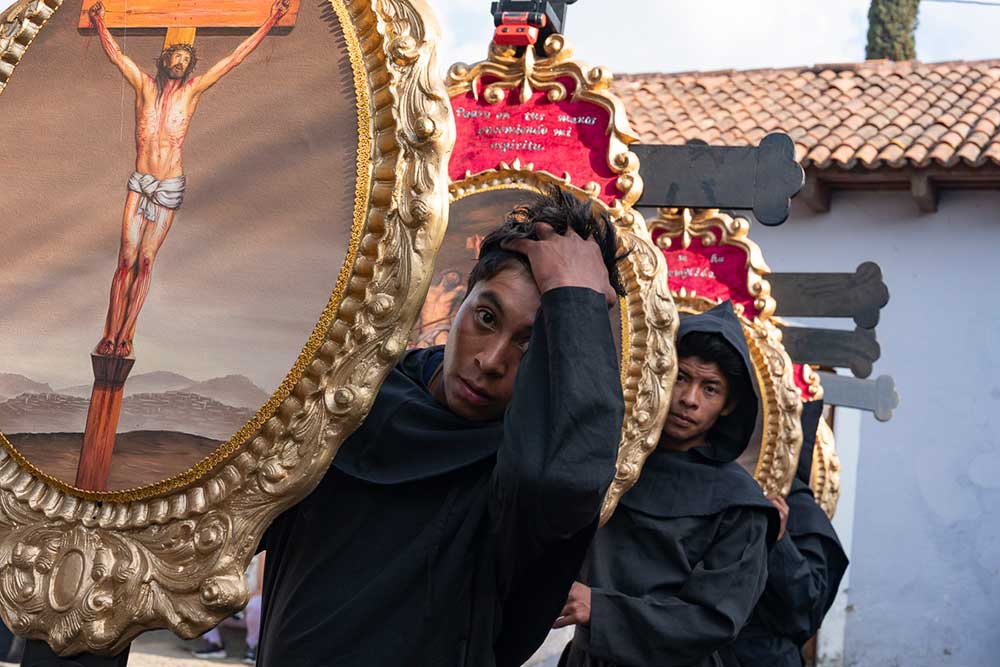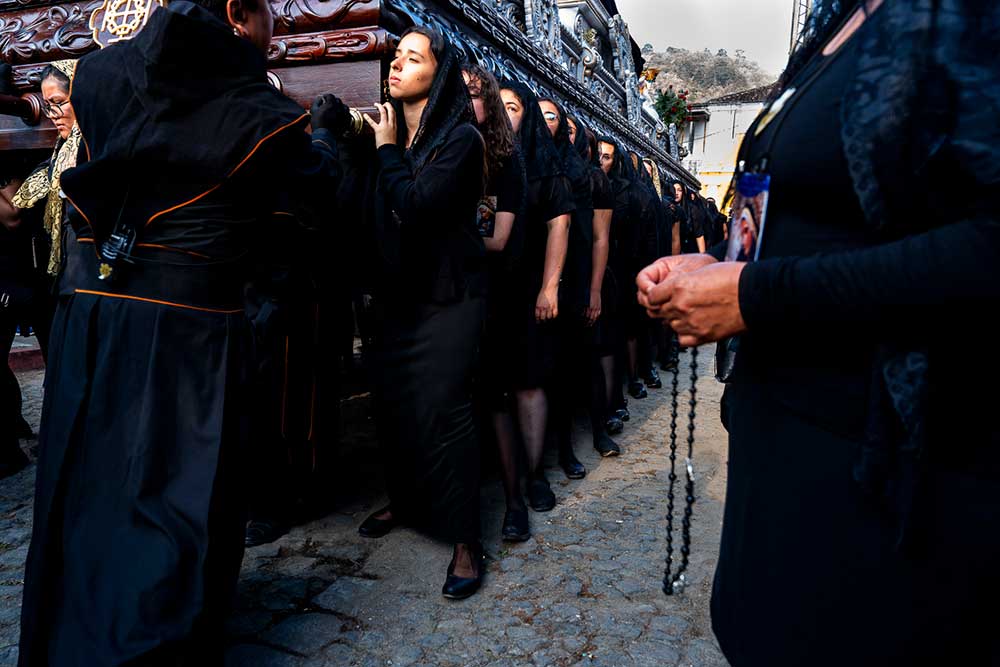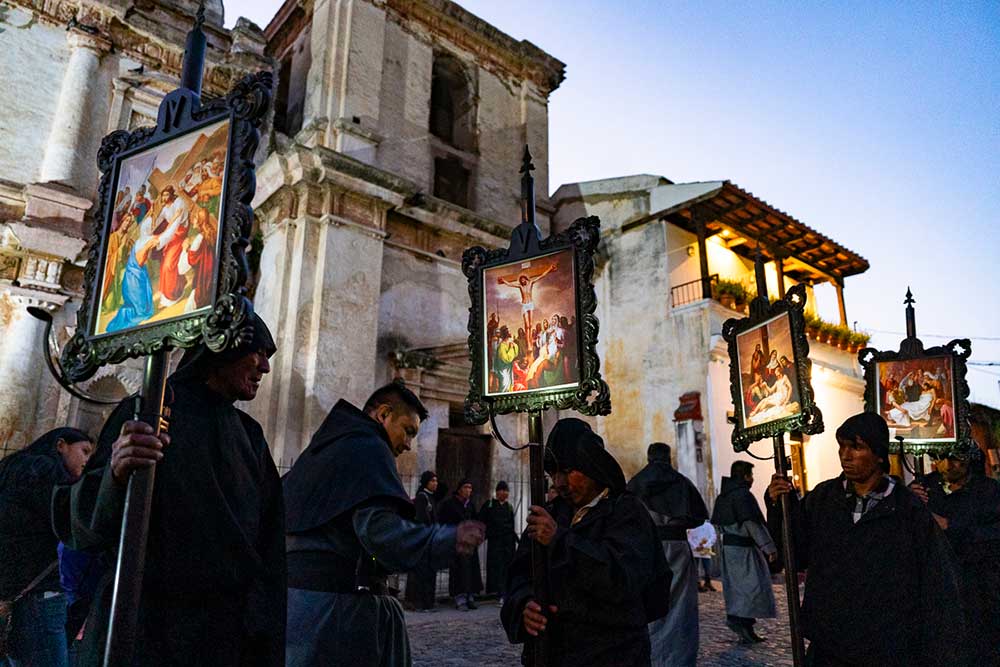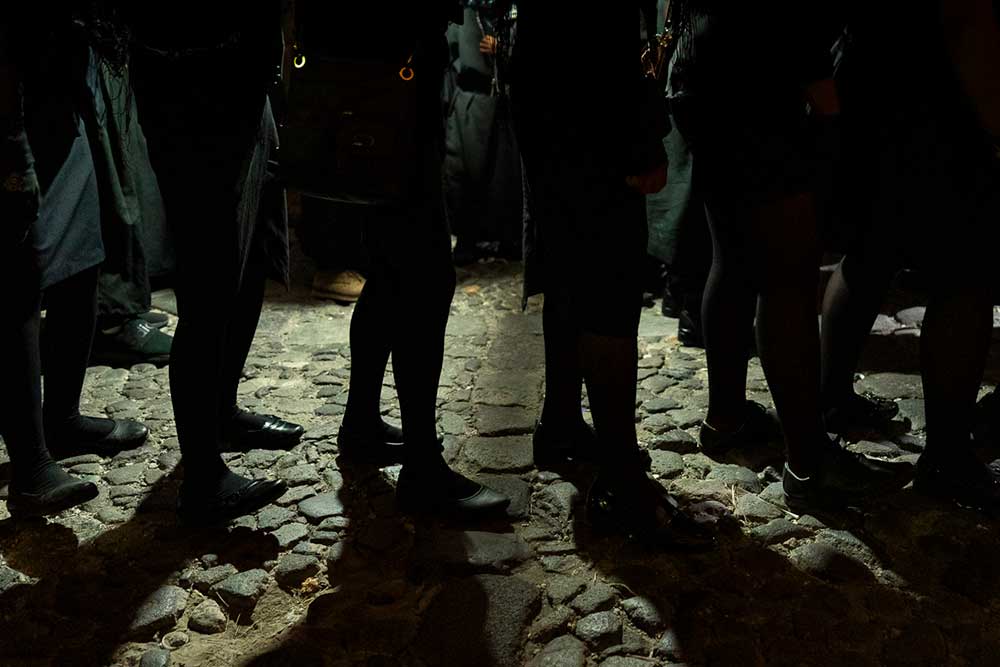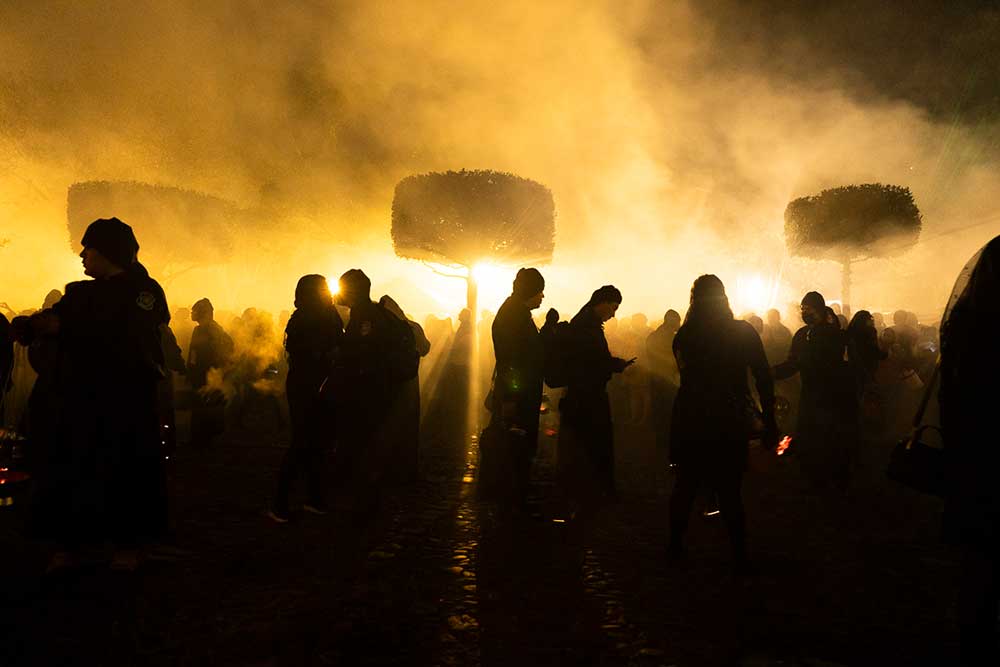La Semana Santa (Holy Week) is the annual Catholic commemoration of the Passion of Christ, which takes place the week before Easter. In Guatemala, where Spanish missionaries initiated this celebration during colonial times, it is now one of the most important weeks of the year in Antigua, a view validated by UNESCO who added it to its Cultural Heritage list in 2022.
Antigua is a charming old city which, despite various natural disasters, still boasts stunning historic buildings. It provides a perfect background for the event. The most important parts of the celebration are the processions organized by prominent religious brotherhoods throughout the week. In these processions, worshippers carry enormous floats covered with life-size religious statues. Some of the floats’ size, scale, and weight do not seem compatible with being carried by people. But yes, men, women, and children carry all these floats. The carriers are measured and organized by height so that the weight of the float is equally distributed –I pity the tallest ones in the group. The children’s procession is endearing to watch as the young ones display pride and joy but always a few little challenges. The processions travel thru narrow cobbled-stoned streets on a route taking them back to the church from which they originated. The course differs from one procession to the next and can sometimes take up to 12 hours. Carriers, up to 100 on the largest floats, are replaced in blocks at pre-determined sites. Carriers are all worshippers who volunteered for this challenging task to honor their God, do penance, or both.
It is hard to describe the scene in any way that would give it justice. A solemn atmosphere permeates the event. Members of the brotherhood in charge precede the floats, sometimes wearing circular pointed hats and carrying a Cross and religious images. Ironically, a guard of Roman soldiers often accompanies the floats. Each procession has at least two floats, one celebrating Christ and the other honoring the Virgin Mary. The carriers (called curcuruchas for men and las devotas for women) are dressed in white, purple, or black robes and walk in a pattern of steps that makes the float look like it is undulating. A funeral marching band follows every float contributing to the somber mood. Some processions occur during the night giving them a solemn atmosphere. All are done amid a thick veil of incense which devotees use to purify the procession path, constantly replenishing their incense burners. A unique feature of the Guatemalan tradition is the beautiful carpets (alfhombras) of flowers, fruits, and colored sawdust built on the path shortly before a procession occurs. The carpet designs vary greatly as different families or groups of friends are responsible for each one. Religious and Mayan symbols in vivid colors are combined to create these short-lived offerings to God, which are soon to be trampled by the heavy floats and the marchers that come later. Huge crowds surround the floats, making it hard to move in any direction.
Like many other countries, Guatemala has socio-economic inequalities and cultural divisions. The Semana Santa celebration had been described to me as a time of unity between the various factions. I can certainly attest that the intense devotion conveyed in the faces of the devotees was the same for all involved. May this feeling of unity carry on for the rest of the year.
About France Leclerc
Born in Quebec, Canada, France Leclerc is an independent photographer who currently lives in Chicago. Her early career was in academia, but her true passion for documentary and street photography has now taken over. Among her most prominent themes are culture (especially ancient ones), gender, and poverty. Her images have now been shown in numerous curated exhibitions and have won prestigious awards. She was a finalist for the Portrait of Humanity Award in 2021 and won a Gold and Bronze Awards in the Paris Prix de la Photographie, 2021. [Official Website]



